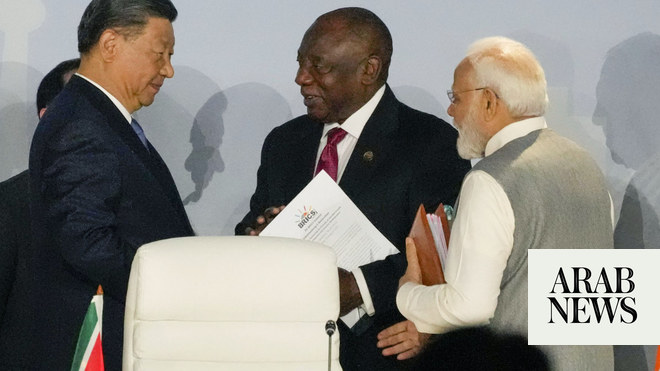
The current visit by Chinese President Xi Jinping to India gives the two countries an opportunity to discuss several thorny issues in an attempt to reset what is a key relationship. It has been under strain for the past year and a half due to serious differences on several issues.
The visit comes at a time when China has been the only permanent member of the UN Security Council to criticize India over Jammu and Kashmir. At a meeting last week with Pakistani Prime Minister Imran Khan, Xi repeated that China was closely monitoring the situation in the state. Delhi was quick to object to the comment, and said Kashmir was an internal matter for India and nothing to do with any other country.
Despite these rather heated exchanges just 48 hours before Xi arrived in Chennai for his informal summit with Indian Prime Minister Narendra Modi, both countries will be keen for the visit to take place in an amicable and constructive environment, rather than highlighting only the areas in which they have differences of opinion that are often strong.
Indeed, coming as it does after a gap of more than 18 months following the previous informal summit between Xi and Modi at Wuhan, the two men had a lot to talk about and a number of issues on which to strike at least a balance, if not an agreement.
The Wuhan meeting also came at a time when relations were strained and testy as a result of numerous international and bilateral issues, not the least of which was a months-long standoff between their armed forces at Doklam along a trilateral border they share with Bhutan. At that time, the surprise summit did help to cool tempers, especially at lower operational levels, and restore an equilibrium in the relationship, in addition to giving it a strategic direction that came from the top.
This time, too, there are numerous irritants. Kashmir, of course, is one, but China is also unhappy with India’s recent flexing of its military muscles on its borders, especially in the contentious regions of Ladakh and Arunachal Pradesh. These are Indian territories but claimed by China. India is holding a large military exercise close to the border in Ladakh and has significantly ramped up its military infrastructure and network in Arunachal.
As strong leaders keen to secure their places not only in their own countries’ histories but also as global statesmen, Xi and Modi could be tempted to take strong stances at their meetings. They would be perhaps better advised to be pragmatic and focus on issues that can bring their countries together.
India is one of the largest markets for mobile telephony in the world, second only to China, this endorsement is a shot in the arm for the Chinese manufacturer at a time when it is needed the most.
Ranvir Nayar
For instance, they plan to hold a joint military exercise to boost mutual confidence and enhance the understanding between the troops who guard their sensitive shared border, which stretches over 4,800km. They are also collaborating on the training of Afghan diplomats as part of their “India-China-Plus” initiative aimed at providing joint development programs in other countries.
They are also focused on promoting people-to-people contacts between their citizens, notably through tourism. This is an area that has been booming in both directions, and the potential for growth remains huge.
But the most important issue for Xi and Modi to discuss is trade. China is already engaged in a trade war with the US, and President Donald Trump has been making similar threats against India. The two countries can see an opportunity to develop bilateral trade to cushion the impact of Trump’s actions. With total trade worth $96 billion last year, China is already India’s largest trading partner, having rapidly risen through the ranks in the past decade, displacing the EU and the US. India will seek to enhance its exports to China to help cut an enormous trade deficit that stood at close to $58 billion last year.
Xi is unlikely to ignore the fact that India remains open, and indeed welcoming, to Chinese investments in various sectors, unlike the pushback against investments and trade from the West, most notably the US and, to some extent, the EU.
He will certainly have been heartened to hear the strong public support from the head of India’s second-largest telecoms operator for beleaguered Chinese telecoms-equipment manufacturer, Huawei. Sunil Mittal, the chairman of Airtel, said Huawei should be allowed to supply India, which is preparing to roll out 5G infrastructure, as the Chinese company’s products are superior to those made by rivals Nokia and Ericsson. This flies in the face of an “advisory” by US Secretary of Commerce Wilbur Ross, who advised India to be wary of Huawei because it poses “serious security threats.”
Given that India is one of the largest markets for mobile telephony in the world, second only to China, this endorsement is a shot in the arm for the Chinese manufacturer at a time when it is needed the most.
It also shows that India and China have enough interest in shared opportunities and platforms to carve out a balanced bilateral relationship that will not be influenced by any turbulence they might face in other dealings around the world. The countries need to be able to build a relationship based on mutual trust and confidence.
• Ranvir S. Nayar is the editor of Media India Group, a global platform based in Europe and India that encompasses publishing, communication and consultation services.
Disclaimer: Views expressed by writers in this section are their own and do not necessarily reflect Arab News" point-of-view












